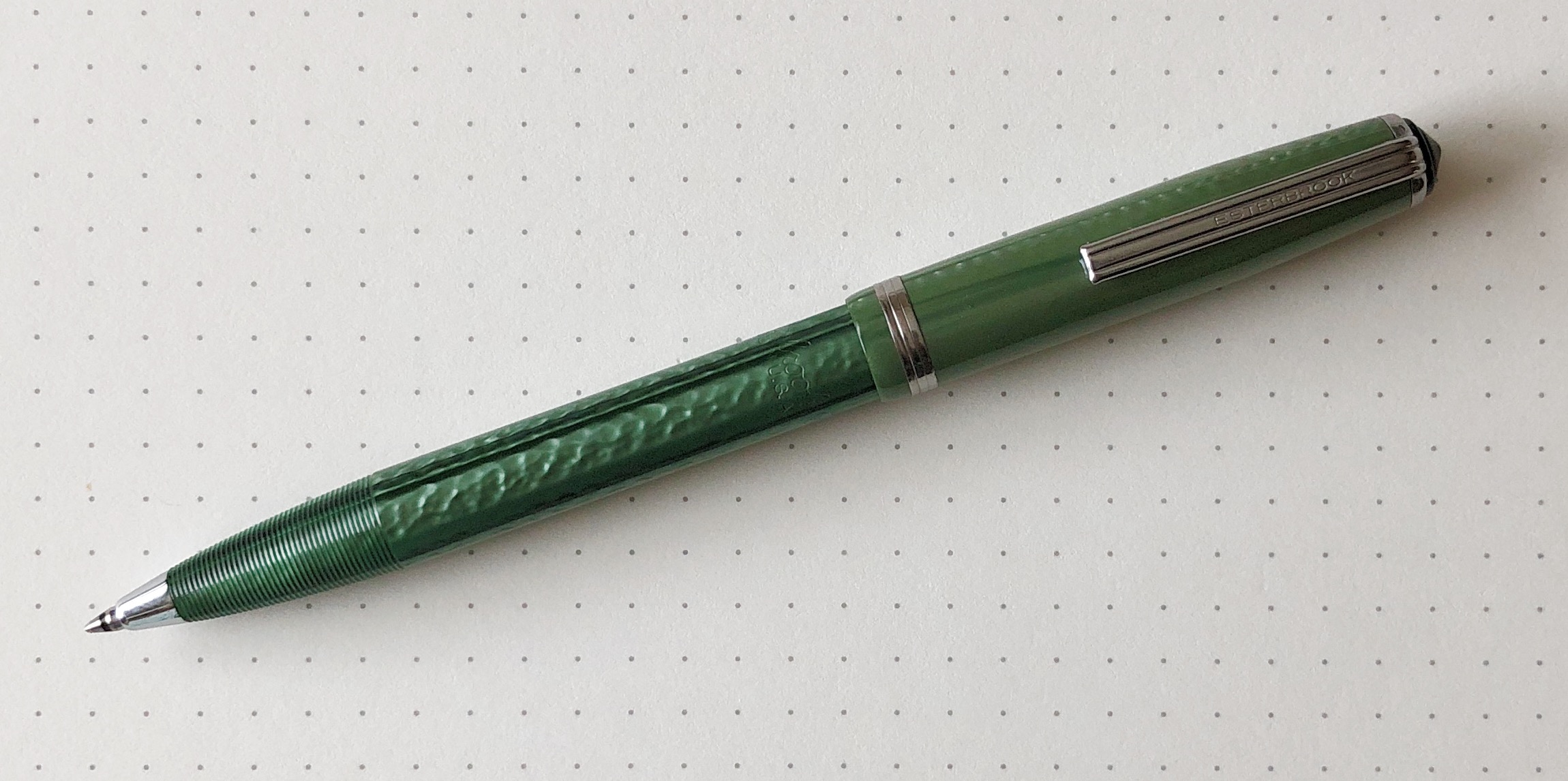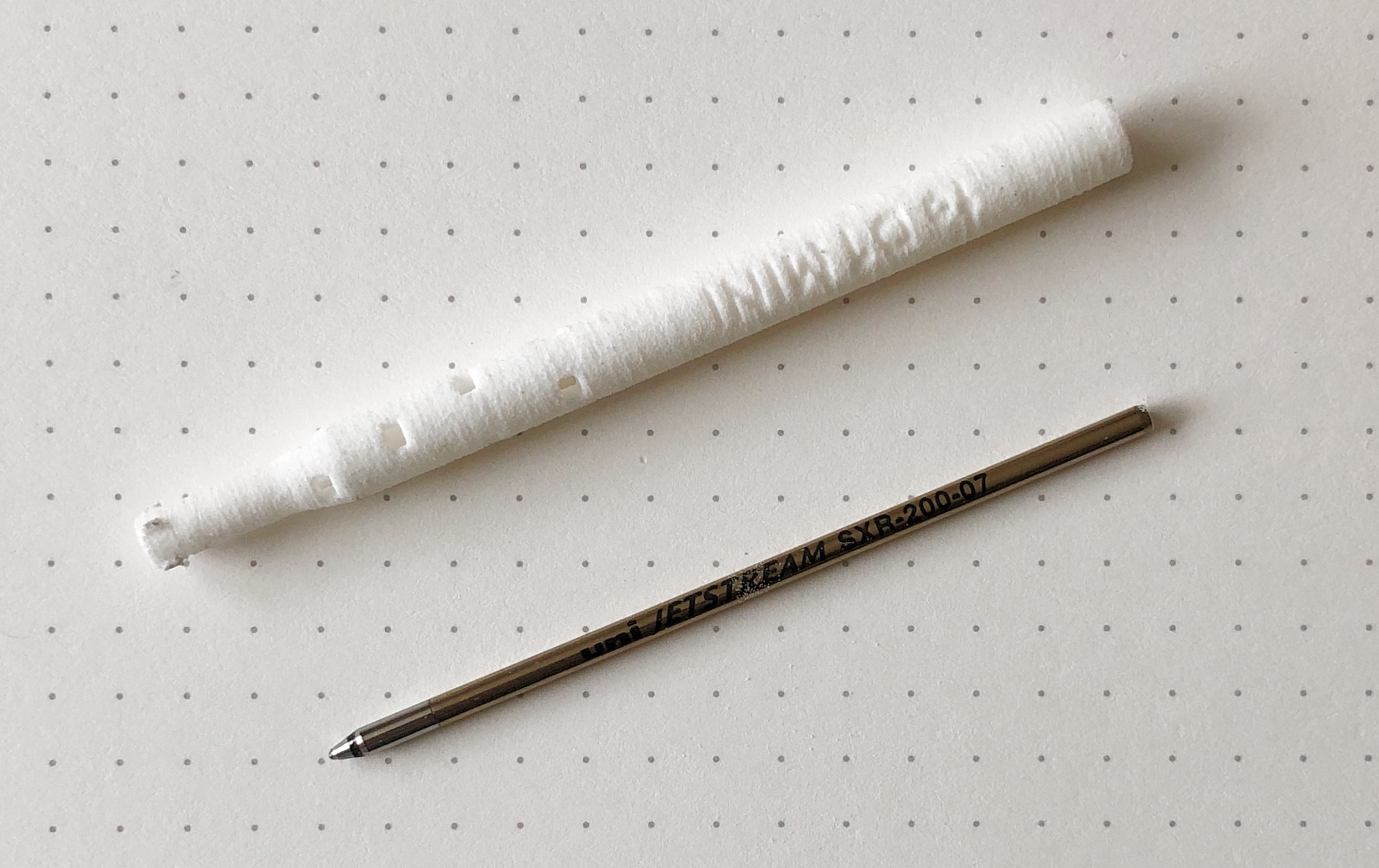If you have been following me for any length of time, you will have heard me discuss the cigar box pen storage I use on my desk. They are made by a friend of mine named John, better known online as Bamapen.
John is a tinkerer at heart, and a lover of pens of all types. These two things came into play with the latest toy he sent me: A 3-D printed adapter to allow D1 refills to be used in the Esterbrook FJ ballpoint pen.
It took me a while to get to this review (sorry John!) and I’m sorry I waited so long because this is a fun pen to use, and a part of what makes this hobby of ours so great. There was a time not so long ago where pens like this Esterbrook with proprietary refills were a lost cause. With the advancements and accessibility of 3-D printing technology over the past several years, enterprising writers can get their old favorite pens up and writing again.
John did just that by designing an adapter based on the original Esterbrook refill, and making it compatible with a common refill from the modern market - in this case the D1 sized refill. The D1 is commonly used in mini pens and multi pens due to its short, skinny format. It has become popular enough that many top manufacturers, such as Uni-ball, have added them to their product lineup using their best ink formulations, like the Jetstream.
I’m using a black 0.7 mm Jetstream refill with the Esterbrook adapter in this FJ pen, and it works like a champ. The fit is perfect, almost as if it is the original setup. That’s kind of the point, right? The original pen, with a modern writing experience.
Using Shapeways, or other 3-D printing services, has become a great way for us to get old pens back in action, or make changes to modern pens - like adding clips - to better fit our respective styles. The growth and popularity of services like these can only benefit us all.
Maybe I need to 3-D print one of my old favorite pens, The Pilot Explorer, and get it back into the market.
My thanks to John for entrusting me with his creation. I may just need to buy this one off of him.
Enjoy reading The Pen Addict? Then consider becoming a member to receive additional weekly content, giveaways, and discounts in The Pen Addict shop. Plus, you support me and the site directly, for which I am very grateful.
Membership starts at just $5/month, with a discounted annual option available. To find out more about membership click here and join us!















